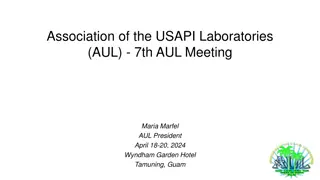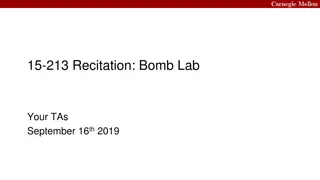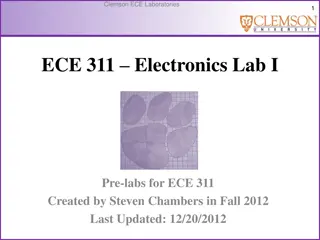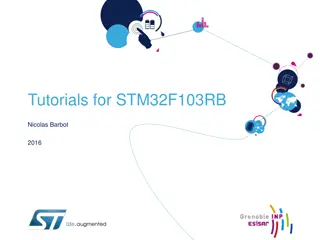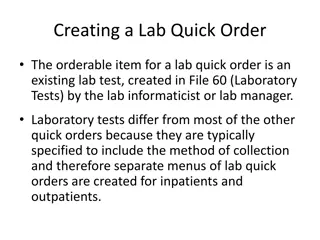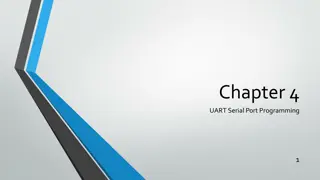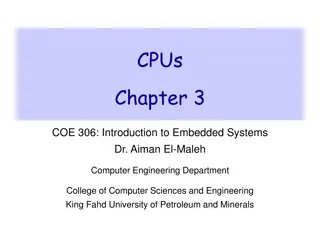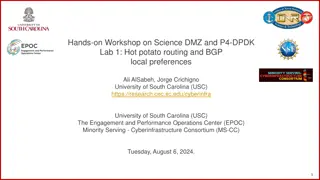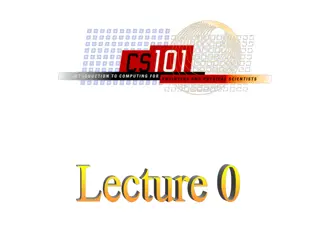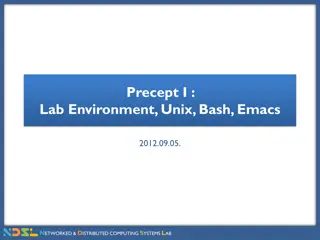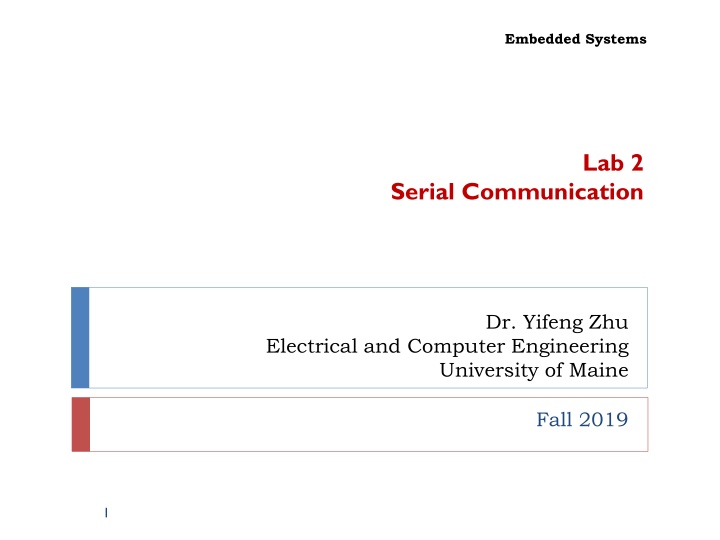
Serial Communication in Embedded Systems Lab
Explore the fundamentals of serial communication in embedded systems lab focusing on UART, baud rate, data frames, error detection, and more with Dr. Yifeng Zhu at the University of Maine.
Download Presentation

Please find below an Image/Link to download the presentation.
The content on the website is provided AS IS for your information and personal use only. It may not be sold, licensed, or shared on other websites without obtaining consent from the author. If you encounter any issues during the download, it is possible that the publisher has removed the file from their server.
You are allowed to download the files provided on this website for personal or commercial use, subject to the condition that they are used lawfully. All files are the property of their respective owners.
The content on the website is provided AS IS for your information and personal use only. It may not be sold, licensed, or shared on other websites without obtaining consent from the author.
E N D
Presentation Transcript
Embedded Systems Lab 2 Serial Communication Dr. Yifeng Zhu Electrical and Computer Engineering University of Maine Fall 2019 1
Universal Asynchronous Receiver and Transmitter (UART) Universal UART is programmable. Asynchronous Sender provides no clock signal to receivers 2
Connecting to PC A USB to TTL serial cable, converts the UART port to a standard USB interface 3
Data Frame Tolerate 10% clock shift during transmission Sender and receiver uses the same transmission speed Data frame One start bit Data (LSB first or MSB, and size of 7, 8, 9 bits) Optional parity bit One or two stop bit 4
Baud Rate Historically used in telecommunication to represent the number of pulses physically transferred per second In digital communication, baud rate is the number of bits physically transferred per second Example: Baud rate is 9600 each frame: a start bit, 8 data bits, a stop bit, and no parity bit. Transmission rate of actual data 9600/8 = 1200 bytes/second 9600/(1 + 8 + 1) = 960 bytes/second The start and stop bits are the protocol overhead 5
Baud Rate ????? ???? ???? = 8 (2 ????8) ???????? If OVER8 is 0, then the signal is oversampled by 16, and 4 bits are used for the fractional part. If OVER8 is 1, then the signal is oversampled by 8, and 3 bits are used. If BRR is 0x1BC and OVER8 is 0, then 0x1B is the integer part and 0xC is the fractional part. 0?? 0?10= 27 +12 ??????? = 0?1? + 16= 27.75 6
Baud Rate Suppose the processor clock ????? is 16MHz, and the system is oversampled by 16 (????8 = 0), ????? 8 2 ????8 ???? ???? ???????? = 16 106 = 8 2 0 9600= 104.1667 Thus USARTDIV is 104.1875, which is encoded as 0x683. desired baud rate 9600 16 106 ???? ???? = 8 (2 0) 104.1875= 9598 7
Error Detection Even Parity: total number of 1 bits in data and parity is even Odd Parity: total number of 1 bits in data and parity is odd Example: Data = 10101011 (five 1 bits) The parity bit should be 0 for odd parity and 1 for even parity This can detect single-bit data corruption
Transmitting 0x32 and 0x3C 1 start bit, 1 stop bit, 8 data bits, no parity, baud rate = 9600 9
Sending Data void USART_Write(USART_TypeDef * USARTx, uint8_t * buffer, int nBytes) { int i; // TXE is cleared by a write to the USART_DR register. // TXE is set by hardware when the content of the TDR // register has been transferred into the shift register. for (i = 0; i < nBytes; i++) { // wait until TXE (TX empty) is set // Writing USART_DR automatically clears the TXE flag while (!(USARTx->SR & USART_SR_TXE)); USARTx->DR = (buffer[i] & 0xFF); } while (!(USARTx->SR & USART_SR_TC)); // wait until TC bit is set USARTx->SR &= ~USART_SR_TC; } 10
Receiving Data void USART_IRQHandler(USART_TypeDef * USARTx, uint8_t * buffer, uint8_t * pRx_counter){ if(USARTx->SR & USART_SR_RXNE) { // Received data buffer[*pRx_counter] = USARTx->DR; // Reading USART_DR automatically clears the RXNE flag (*pRx_counter)++; if((*pRx_counter) >= BufferSize ) (*pRx_counter) = 0; } } void USART1_IRQHandler(void) { USART_IRQHandler(USART1, USART1_Buffer_Rx, &Rx1_Counter); } void USART2_IRQHandler(void) { USART_IRQHandler(USART2, USART2_Buffer_Rx, &Rx2_Counter); } 11
UART Interrupt: Receiving Data 12
UART Interrupt: Receiving Data 13
UART DMA: Receiving & Sending 14
UART DMA: Receiving & Sending 15





